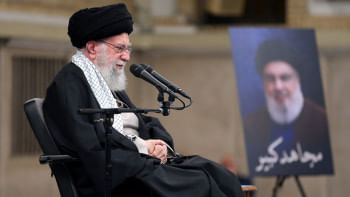Tintin: A flawed hero that every kid needs to know

"Your Tintin is racist."
Someone said that to me recently. It did not bode well. You don't accuse my hero and get away with it. He wasn't exactly wrong, but he wasn't right either.
I was about 7 when I stumbled upon the counterfeiting gang operating out of The Black Island. Mystery, intrigue and the unwavering friendship of a white, sock like dog ensued. I sure daydreamed a lot, clutching a hardcover edition of the one and only Tintin Adventure I found. I read it cover to cover, many times, glossing over the rest of the titles on the back wondering where and how I wold find them. Each time I returned the treasured book back to my cousins and would borrow again to re-read a few weeks later. My cousins had just arrived from abroad, bringing with them hundreds of books but the lone Tintin was my absolute favourite. Well, till I started saving my lunch money to buy a few more of the adventure. All that for a racist hero? Bear with me.
Tintin, the Belgian boy reporter and his trusty dog, travelled across the world unearthing secrets, battling criminals, opposing dictators and driving cool cars. And he's been doing that for 92 years now. Georges Remi (Hergé) published the first book in 1930: Tintin in the Land of the Soviets. Since then, his character has travelled the world in over 70 languages and sold more than 200 million copies. We even have brilliant Bangla translations, small changes surfacing such as the beloved dog Snowy (Milou in the original French edition) renamed as Kuttush. Why? Because it rolls off Bangali tongues easier. But despite these changes, Tintin's appeal is universal. He is the indomitable spirit of adventure. He's the cool kid all kids want to be. But, a racist hero? Nope.
I couldn't have enough of Tintin. As I grew up, internet happened as did smartphones. I ended up reading most of the stories in digital format. But the real joy of Tintin fans comes from holding the book, flipping through the pages and marvelling at the artwork. See, this is artwork done at a time before Pinterest, Google, and drawing apps that let you trace in seconds. This was the brilliant artwork of Hergé painstakingly studying and referencing real objects, vehicles, and locations to get it down to perfection. As I grew up I started collecting Tintin again. But it was hard work because I wanted to add the missing books to what I had, which was a format that isn't easy to find anymore. Silly, but then hobbies often seem that way. My wife helped. In fact, I looked high and low to get all the volumes together as a gift for the wife. That also served as a good excuse to spend without feeling guilty. Wife loves Tintin too. Win-win.
As I massed the books, I would open to read and be transfixed by the art. Hergé would sketch and then his assistants would help in filling in the colours. It's a painstaking process of drafts, revisions, and final line work. He used watercolour, Ecoline ink, and gouache for colouring. The solid colours and soothing palette has been the inspiration for many an artist including Andy Warhol. It's a style that has become so popular it is referred to as the 'Ninth Art'.
Yet, accusations of racism pop up. Tintin in The Congo (1931) is often brought up as an overly simplified racist depiction of the Congolese who are portrayed as naïve and in awe of the white man. The more you ruminate, the more certain things pop up that don't sit that well with the PC nature of 2021. Except, I don't. I get lost in the stories each time I flip open a book. Tintin is a product of its times, the early 1920's. It was easy to treat and recreate political commentary with a casual prejudice.
Except kids don't see all that complication. What they see is a hero with strong morals, amazing friends, and an unshakeable sense of honour. They see stylised lands set in a period way back when things appeared simpler. It is not an accurate historic saga but tales of adventure. He's fought against the tyranny of Imperial Japan, salve traffickers, and despotic dictators. He's fought for the opposed regardless of colour or race. And that is what makes Tintin so valued 92 years later: he has his flaws yet his values make him the perfect poster boy for children everywhere. That's the beauty of Tintin—you don't over analyse. Maybe just go lightly over the controversial first two books. But our hero is no racist.
Ehsanur Raza Ronny is editor of Toggle magazine and Commercial Content Marketing, The Daily Star.

 For all latest news, follow The Daily Star's Google News channel.
For all latest news, follow The Daily Star's Google News channel. 



Comments